Laser Surface Hardening of Austempered Ductile Iron (ADI)
Abstract
:1. Introduction
2. Materials and Methods
2.1. Tested Samples
2.2. Tribological Analysis
2.3. Parameters of Laser Hardening
3. Results
3.1. Microstructure of the Tested Samples
3.1.1. ADI 9k6 240
3.1.2. ADI 9k6 310
3.1.3. ADI 9k6 400
3.2. Results of Tribological Analysis
3.2.1. Progress of the ADI 9k6 240 Tribological Test
3.2.2. Surface Analysis of ADI 9k6 240 Sample after Tribological Test
3.2.3. Progress of the ADI 9k6 310 Tribological Test
3.2.4. Surface Analysis of the ADI 9k6 310 Sample after the Tribological Test
3.2.5. Progress of the ADI 9k6 400 Tribological Test
3.2.6. Surface Analysis of the ADI 9k6 400 Sample after the Tribological Test
3.3. Discussion
3.4. Conclusions
Author Contributions
Funding
Institutional Review Board Statement
Informed Consent Statement
Data Availability Statement
Acknowledgments
Conflicts of Interest
References
- Huai, W.; Zhang, C.; Wen, S. Graphite-based solid lubricant for high-temperature lubrication. Friction 2020, 9, 1660–1672. [Google Scholar] [CrossRef]
- Scharf, T.W.; Prasad, S. Solid lubricants: A review. J. Mater. Sci. 2013, 48, 511–531. [Google Scholar] [CrossRef]
- Hase, A. Visualization of the tribological behavior of graphite in cast iron by in situ observations of sliding interfaces. Tribol. Int. 2019, 138, 40–46. [Google Scholar] [CrossRef]
- Sugishita, J.; Fujiyoshi, S. The effect of cast iron graphites on friction and wear performance I: Graphite film formation on grey cast iron surfaces. Wear 1981, 66, 209–221. [Google Scholar] [CrossRef]
- Meier, L.; Hofmann, M.; Saal, P.; Volk, W.; Hofmann, H. In-situ measurement of phase transformation kinetics in austempered ductile iron. Mater. Charact. 2013, 85, 124–133. [Google Scholar] [CrossRef]
- Catalán, N.; Esteban, R.; Adrian, B.; Diego, C. Surface Laser Treatment of Cast Irons: A Review. Metals 2022, 12, 562. [Google Scholar] [CrossRef]
- Frocisz, L.; Matusiewicz, P.; Krawczyk, J. Effect of Varying the Volume Fractions of Ledeburitic Cementite and Graphite on the Tribological Properties of Commercially Used Cast Irons. Lubricants 2023, 11, 498. [Google Scholar] [CrossRef]
- Tewary, U.; Paul, D.; Mehtani, H.K.; Bhagavath, S.; Alankar, A.; Mohapatra, G.; Sahay, S.S.; Panwar, A.S.; Karagadde, K.; Samajdar, I. The origin of graphite morphology in cast iron. Acta Mater. 2022, 226, 117660. [Google Scholar] [CrossRef]
- Zhang, N.; Zhang, J.; Lu, L.; Zhang, M.; Zeng, D.; Song, Q. Wear and friction behavior of austempered ductile iron as railway wheel material. Mater. Des. 2016, 89, 815–822. [Google Scholar] [CrossRef]
- Wang, X.; Du, Y.; Liu, C. Tribological behaviour and wear mechanism of ADI with different hardness values. Mater. Sci. Technol. 2023, 39, 2409–2416. [Google Scholar] [CrossRef]
- Liu, C.; Du, Y.; Wang, X.; Zheng, Q.; Zhu, X.; Zhang, D.; Liu, D.; Yang, C.; Jiang, B. Comparison of the tribological behavior of quench-tempered ductile iron and austempered ductile iron with similar hardness. Wear 2023, 520–521, 204668. [Google Scholar] [CrossRef]
- Hu, Z.; Du, Y. Mechanical and Tribological Behavior of Austempered Ductile Iron (ADI) under Dry Sliding Conditions. Lubricants 2023, 11, 182. [Google Scholar] [CrossRef]
- Bai, J.; Xu, H.; Chen, X.; Cao, W.; Zhang, X.; Xu, Y. Effect of tempering temperature on the wear behaviour of martensitic ductile iron. Mater. Sci. Technol. 2023, 39, 744–755. [Google Scholar] [CrossRef]
- Wang, B.; Barber, G.; Qui, F.; Zou, Q.; Yang, H. A Review: Phase Transformation and Wear Mechanisms of Single-Step and Dual-Step Austempered Ductile Irons. J. Mater. Res. Technol. 2020, 9, 1054–1069. [Google Scholar] [CrossRef]
- Alaalam, M.; Grech, M. Effect of Austenitizing Conditions on the Impact Properties of an Alloyed Austempered Ductile Iron of Initially Ferritic Matrix Structure. J. Mater. Eng. Perform. 1998, 7, 265–272. [Google Scholar] [CrossRef]
- Tissi, G.; Fonseca, G. Influence of austempering time and austempering temperature in microstructure and mechanical properties in austempered ductile iron. Int. J. Res.-GRANTHAALAYAH 2020, 8, 51–62. [Google Scholar] [CrossRef]
- Hegde, A.; Gurumurthy, B.M.; Hindi, J.; Sharma, S.; Gowrishankar, M.C. Effect of austempering temperature and manganese content on the impact energy of austempered ductile iron. Cogent Eng. 2021, 8, 1939928. [Google Scholar] [CrossRef]
- Hsu, C.-H.; Lin, K.-T. A study on microstructure and toughness of copper alloyed and austempered ductile irons. Mater. Sci. Eng. A 2011, 528, 5706–5712. [Google Scholar] [CrossRef]
- Yang, J.; Putatunda, S.K. Improvement in strength and toughness of austempered ductile cast iron by a novel two-step austempering process. Mater. Des. 2004, 25, 219–230. [Google Scholar] [CrossRef]
- Balos, S.; Rajnovic, D.; Dramicanin, M.; Labus, D.; Eric, O.; Grbovic-Novakovic, J.; Sidjamin, L. Abrasive wear behaviour of ADI material with various retained austenite content. Int. J. Cast Met. Res. 2016, 29, 187–193. [Google Scholar] [CrossRef]
- Wang, B.; Qiu, F.; Barber, G.; Pan, Y.; Cui, W.; Wang, R. Microstructure, Wear Behavior and Surface Hardening of Austempered Ductile Iron. J. Mater. Res. Technol. 2020, 9, 9838–9855. [Google Scholar] [CrossRef]
- Mussa, A.; Krakhmalev, P.; Bergstrom, J. Wear mechanisms and wear resistance of austempered ductile iron in reciprocal sliding contact. Wear 2022, 498–499, 204305. [Google Scholar] [CrossRef]
- Batra, U.; Sharma, J.D. Wear Performance of Cu-Alloyed Austempered Ductile Iron. J. Mater. Eng. Perform. 2012, 22, 1136–1142. [Google Scholar] [CrossRef]
- Sandven, O.A. Laser surface hardening. In ASM Handbook Heat Treating; ASM International: Materials Park, OH, USA, 1991; Volume 4, pp. 665–689. [Google Scholar]
- Rajan, T.V.; Sharma, C.P.; Sharma, A. Laser Hardening. In Heat Treatment: Principles and Techniques, 2nd ed.; PHI Learning: New Delhi, India, 2011; pp. 148–151. [Google Scholar]
- Steen, W.M.; Mazumder, J. Laser heat treatment. In Laser Material Processing, 4th ed.; Springer: London, UK, 2010; pp. 297–309. [Google Scholar]
- Giorleo, L.; Semeraro, Q. Modelling of back tempering in laser hardening. Int. J. Adv. Manuf. Technol. 2011, 54, 969–977. [Google Scholar] [CrossRef]
- García Navas, V.; Lambarri, J.; Leunda, J.; Sanz, C.; Soriano, C. Effect of laser surface hardening on the microstructure, hardness and residual stresses of austempered ductile iron grades. Appl. Surf. Sci. 2011, 257, 7101–7106. [Google Scholar] [CrossRef]
- Du, Y.; Gao, X.; Wang, X.; Wang, X.; Ge, Y.; Jiang, B. Tribological behavior of austempered ductile iron (ADI) obtained at different austempering temperatures. Wear 2020, 456–457, 203396. [Google Scholar] [CrossRef]
- Zhang, J.; Zhang, N.; Zhang, M.; Zeng, D.; Song, Q.; Lu, L. Rolling-sliding wear of austempered ductile iron with different strength grades. Wear 2014, 318, 62–67. [Google Scholar] [CrossRef]


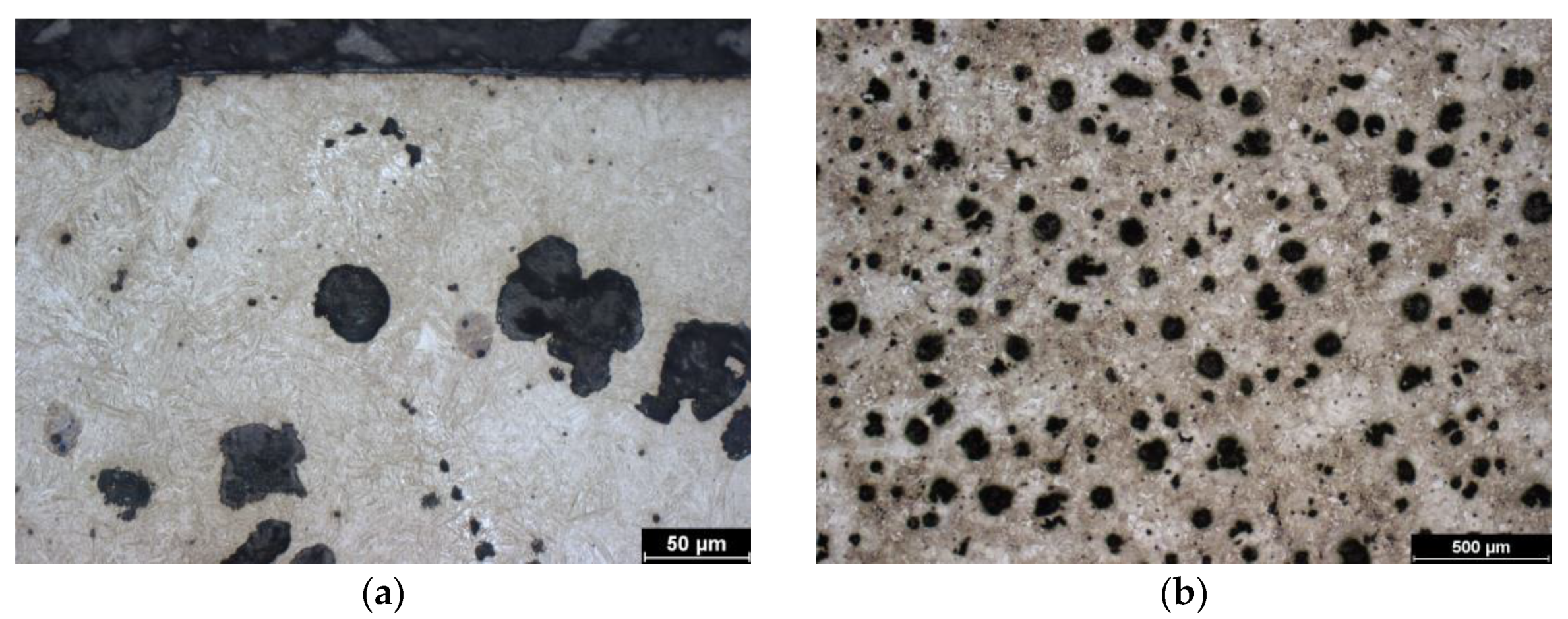
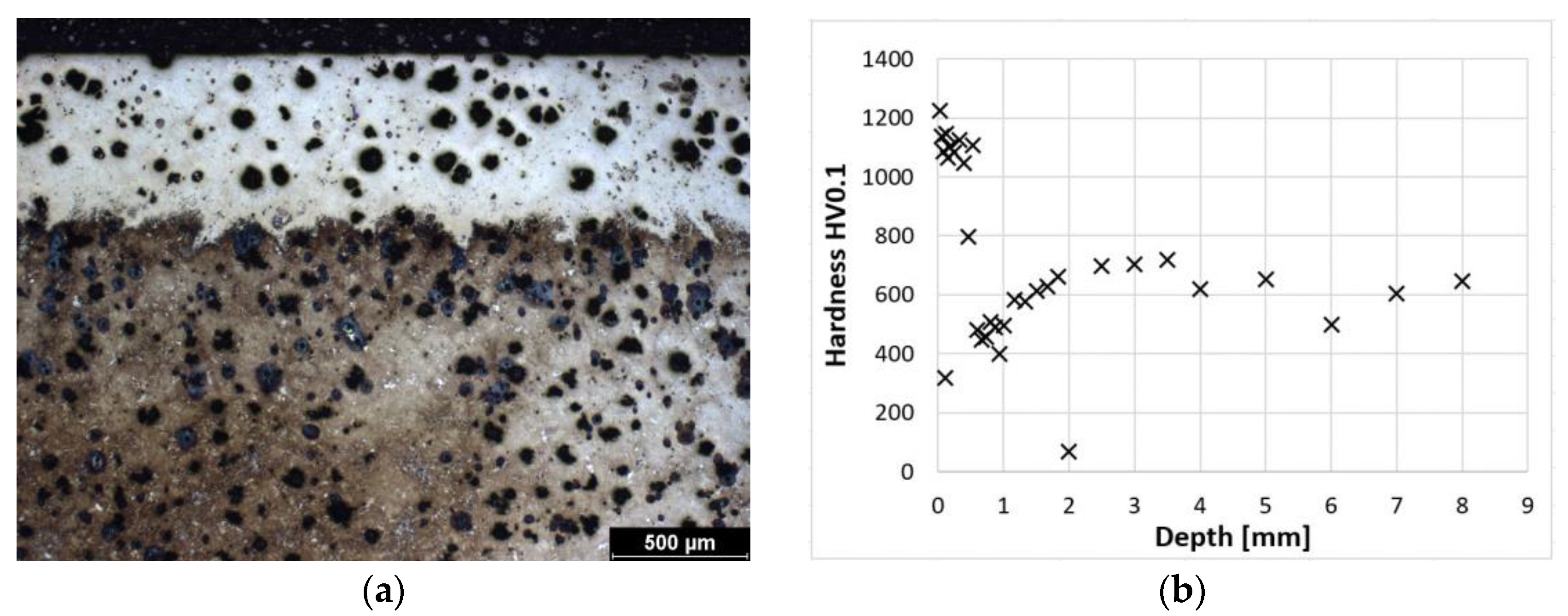
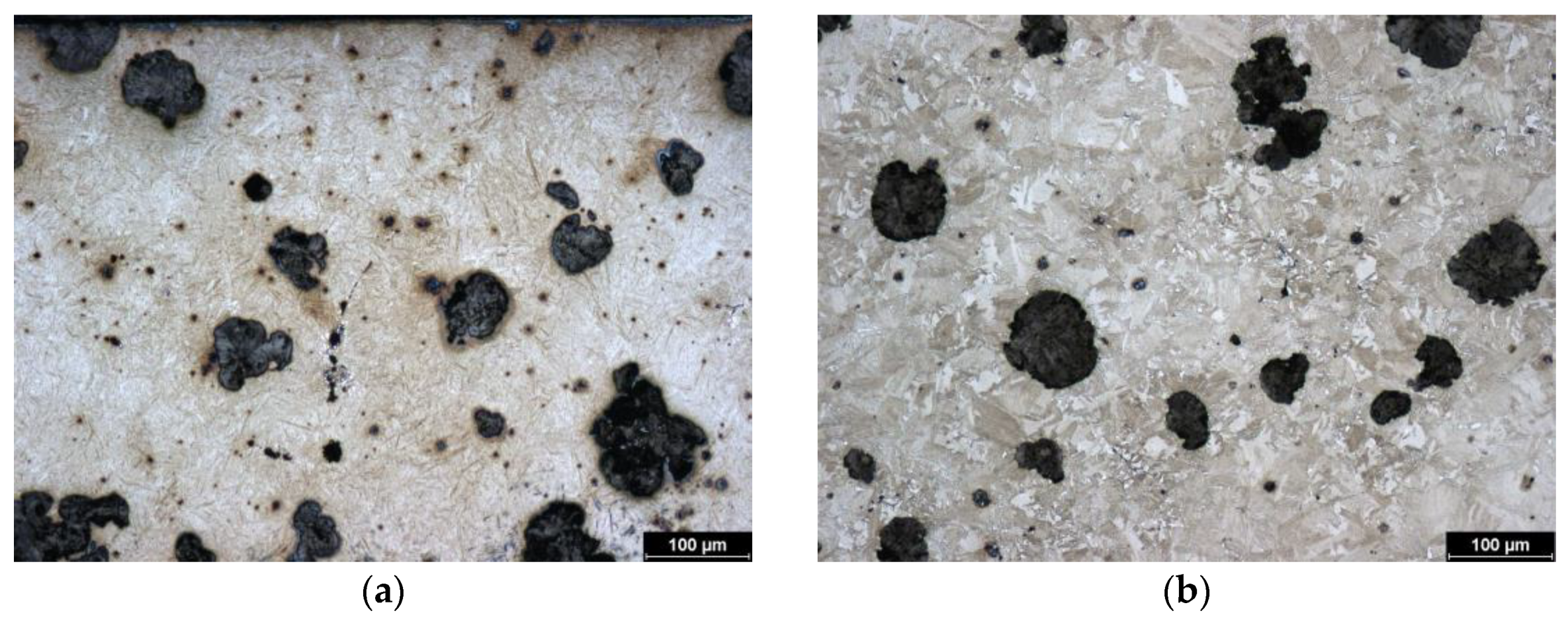


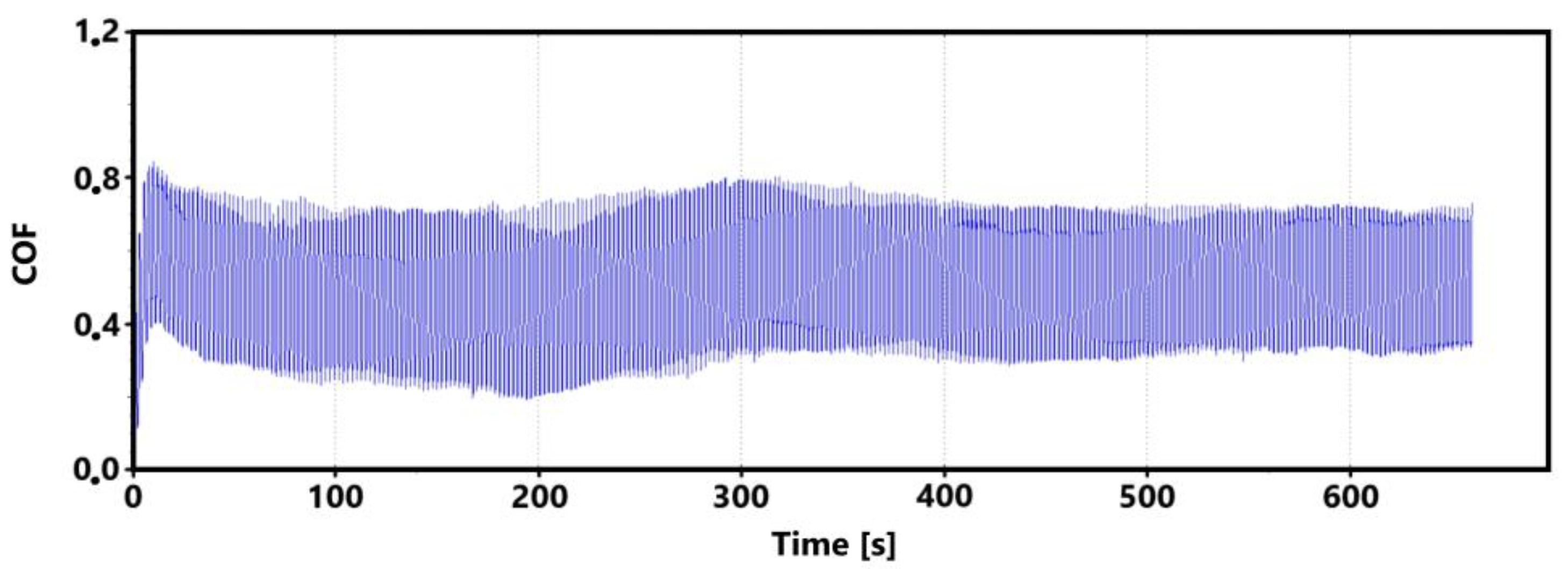
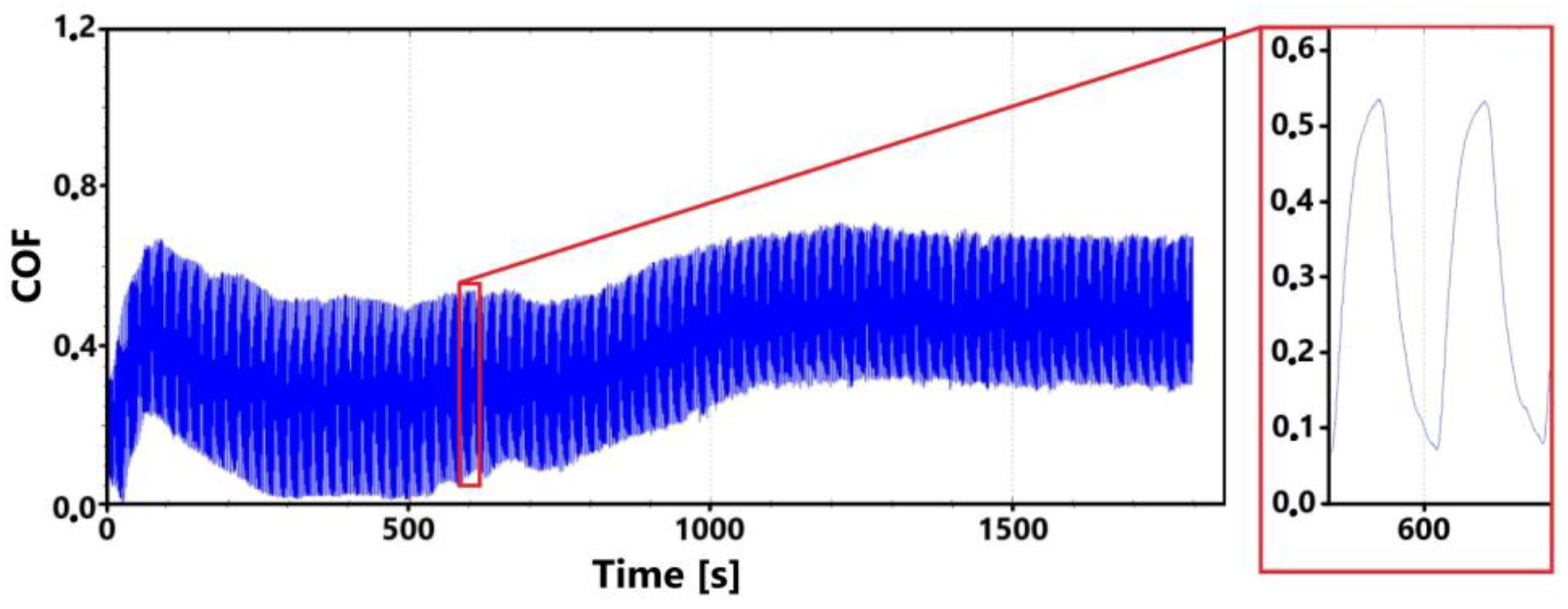
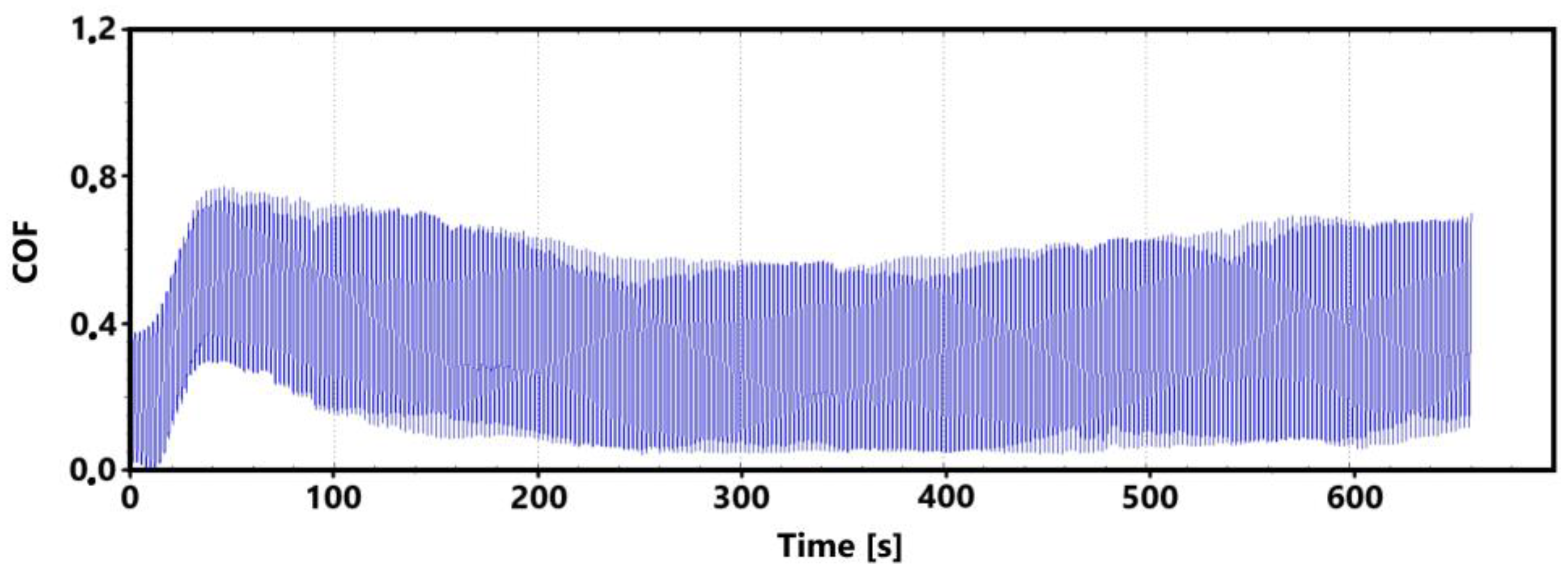
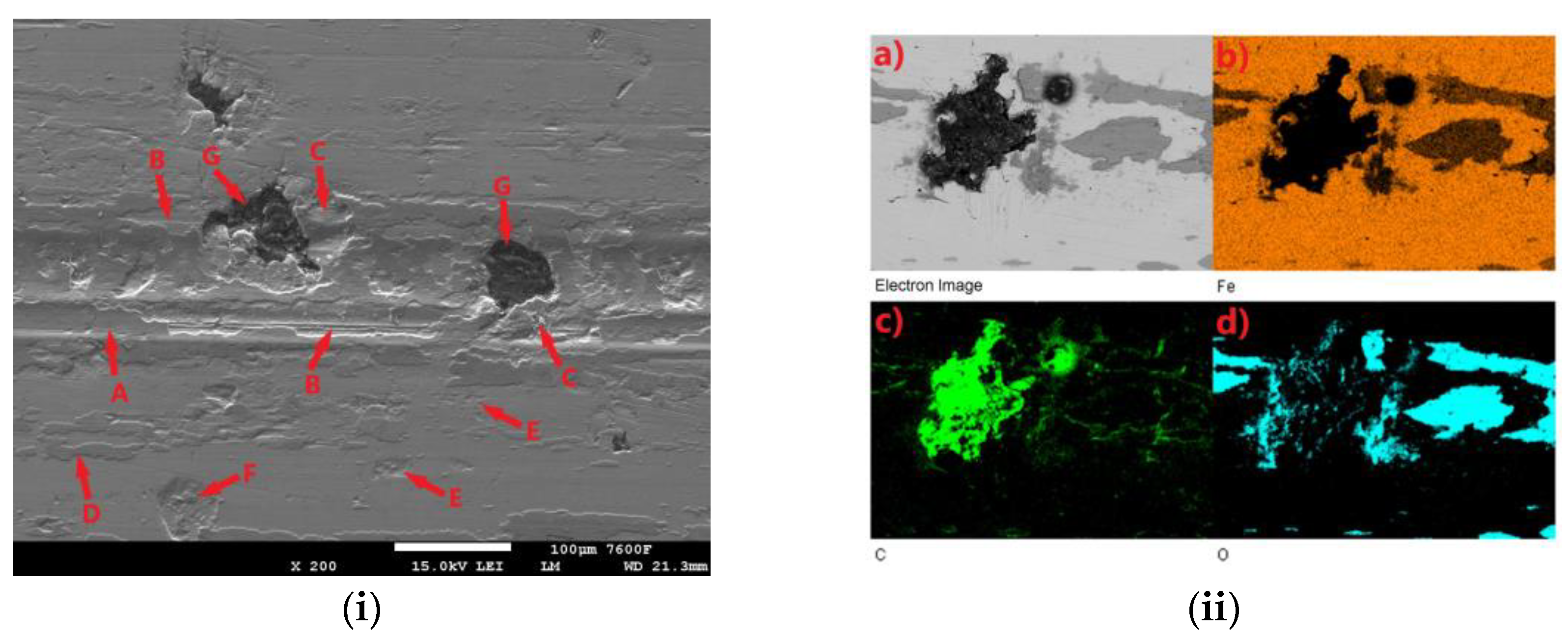
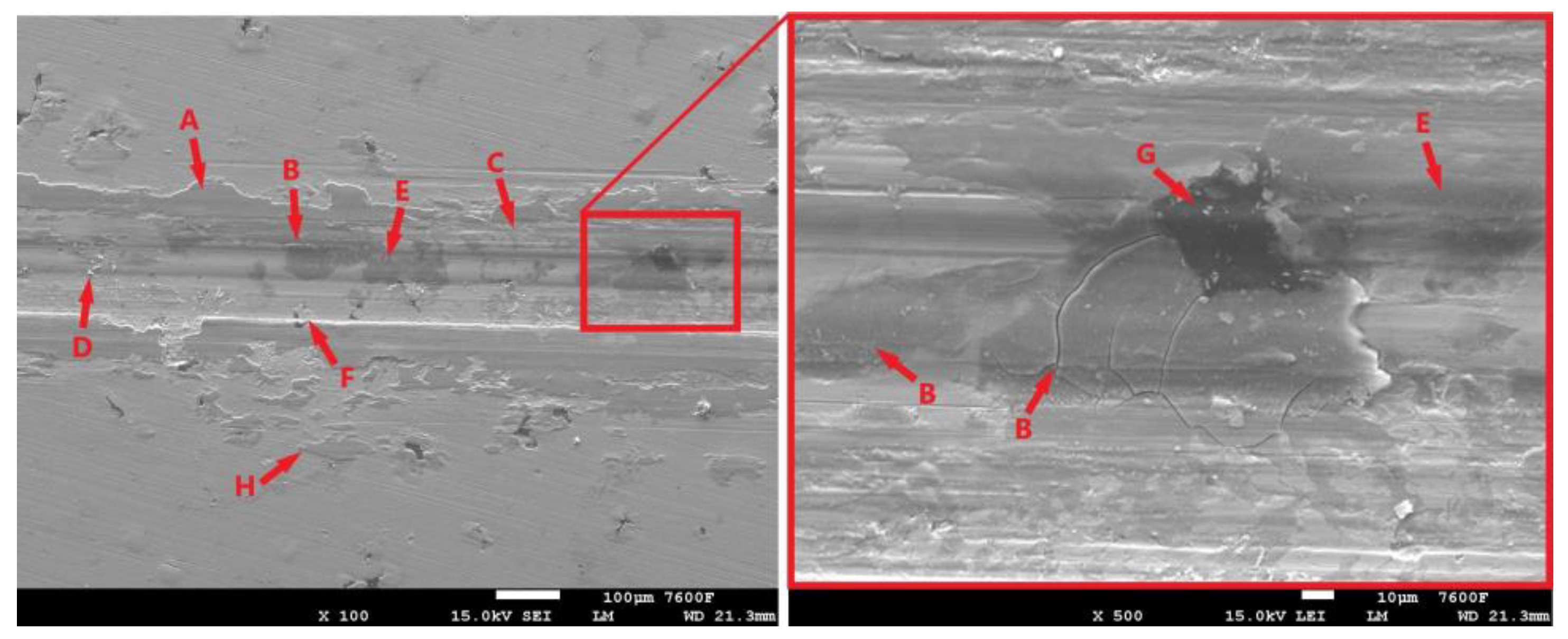
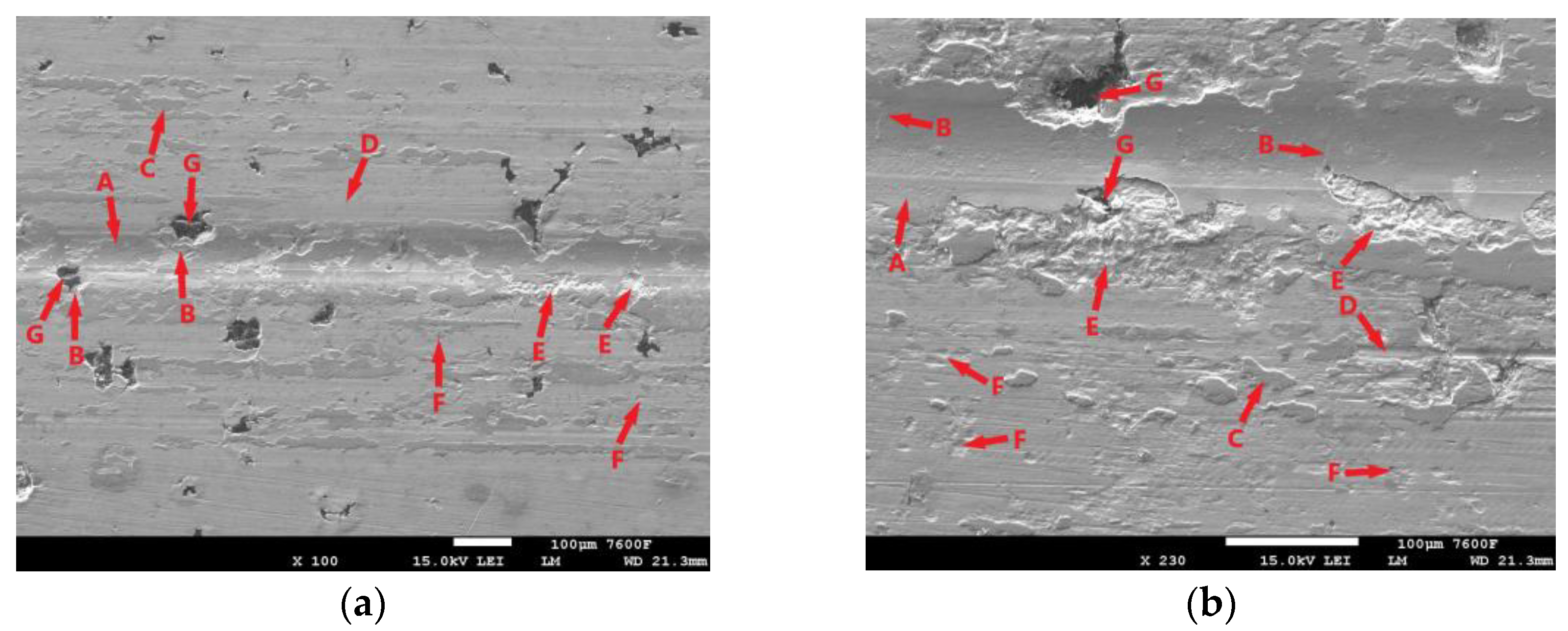
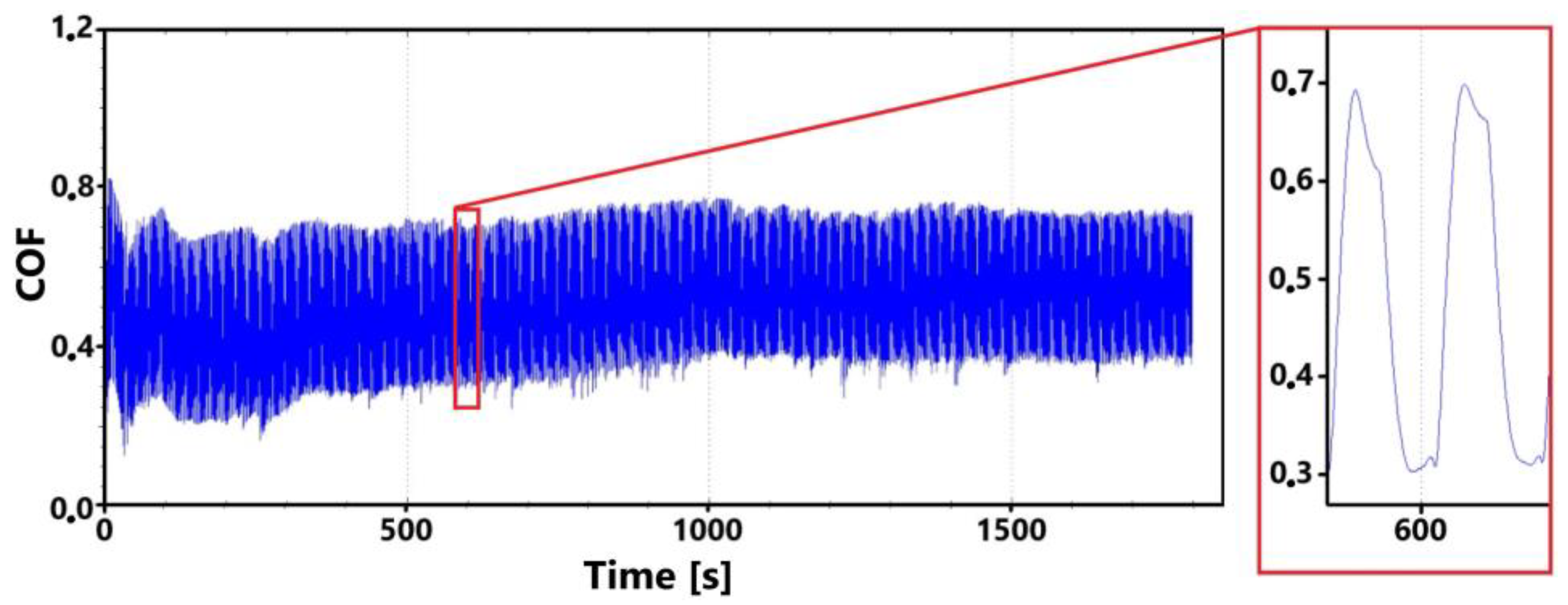

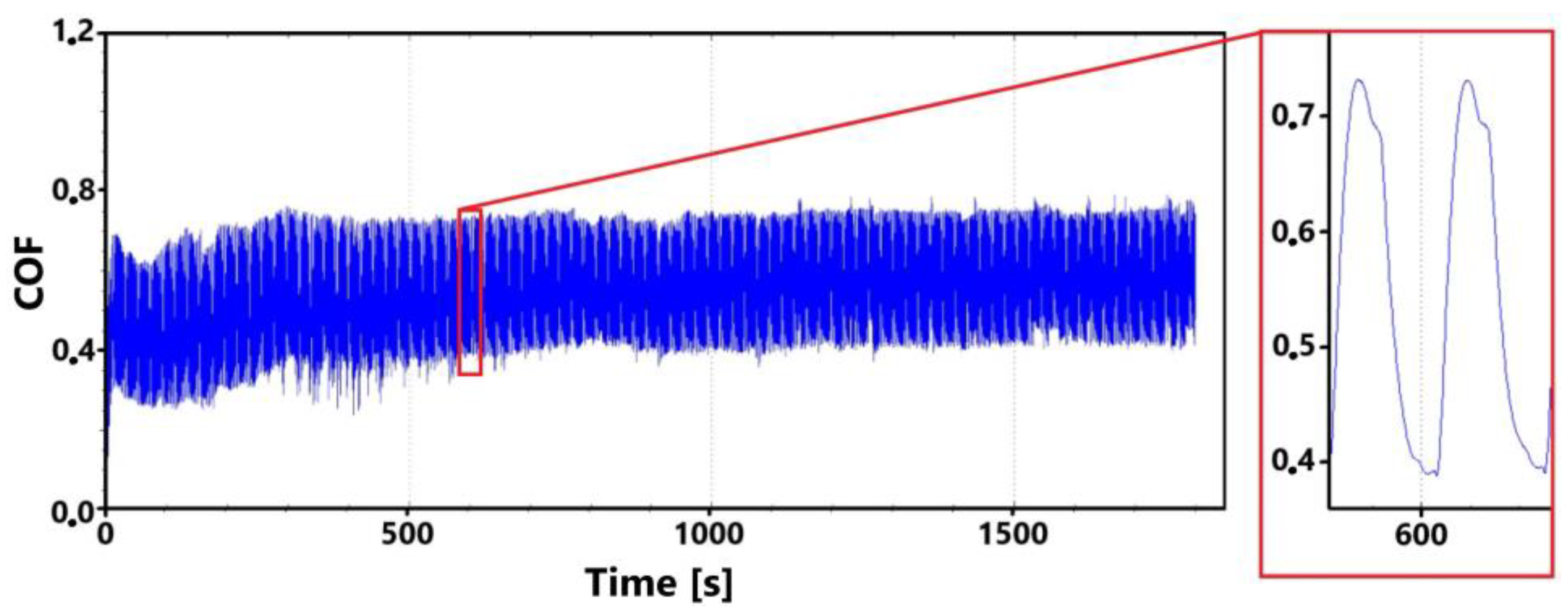
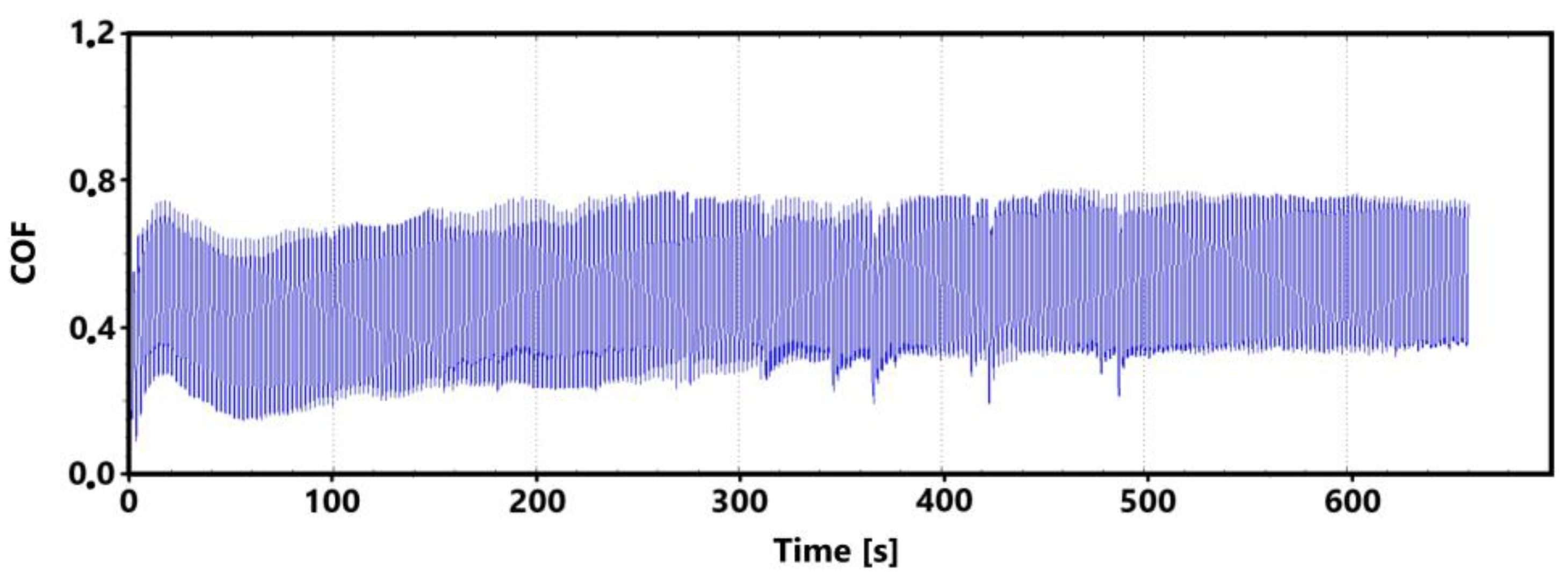
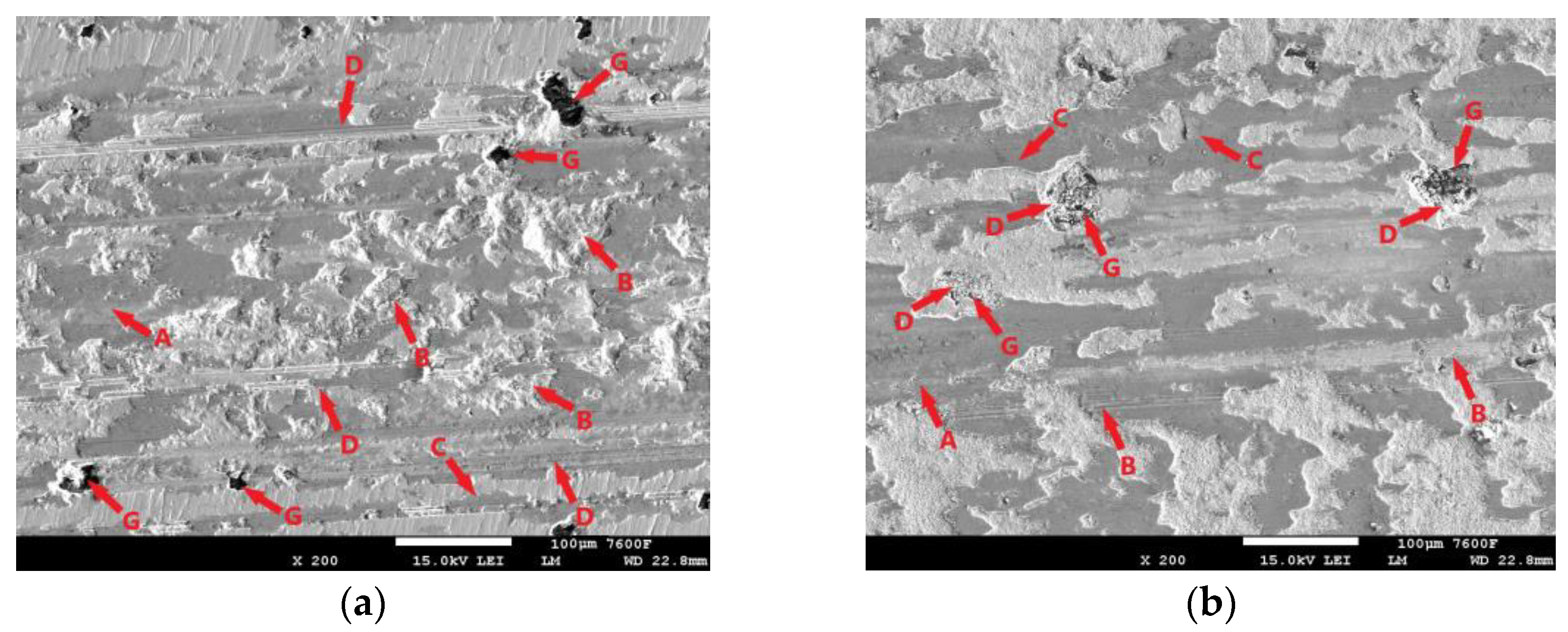

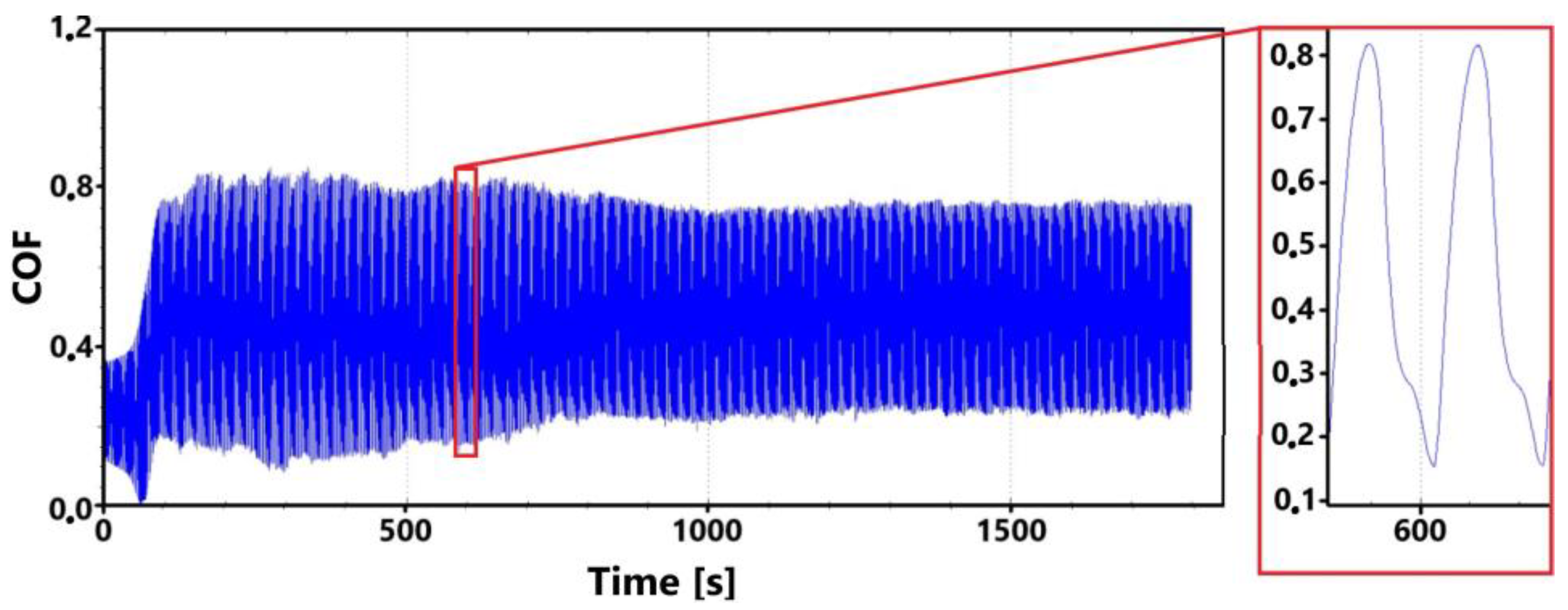


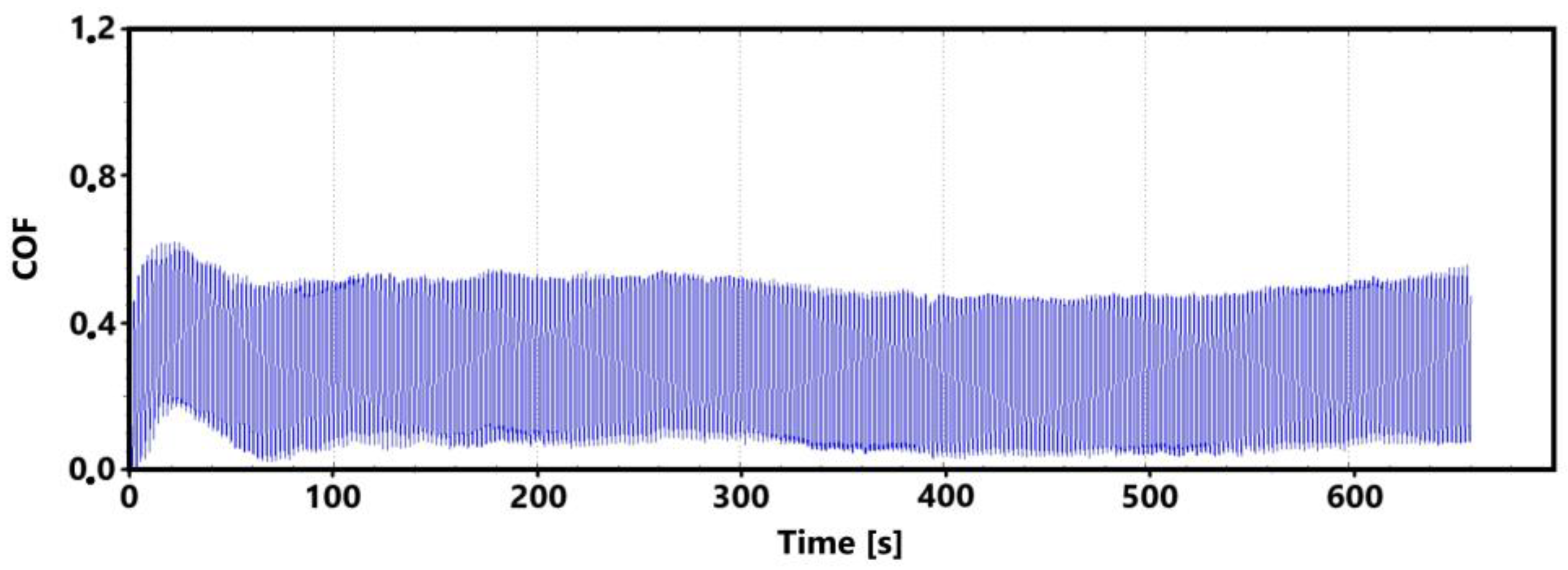

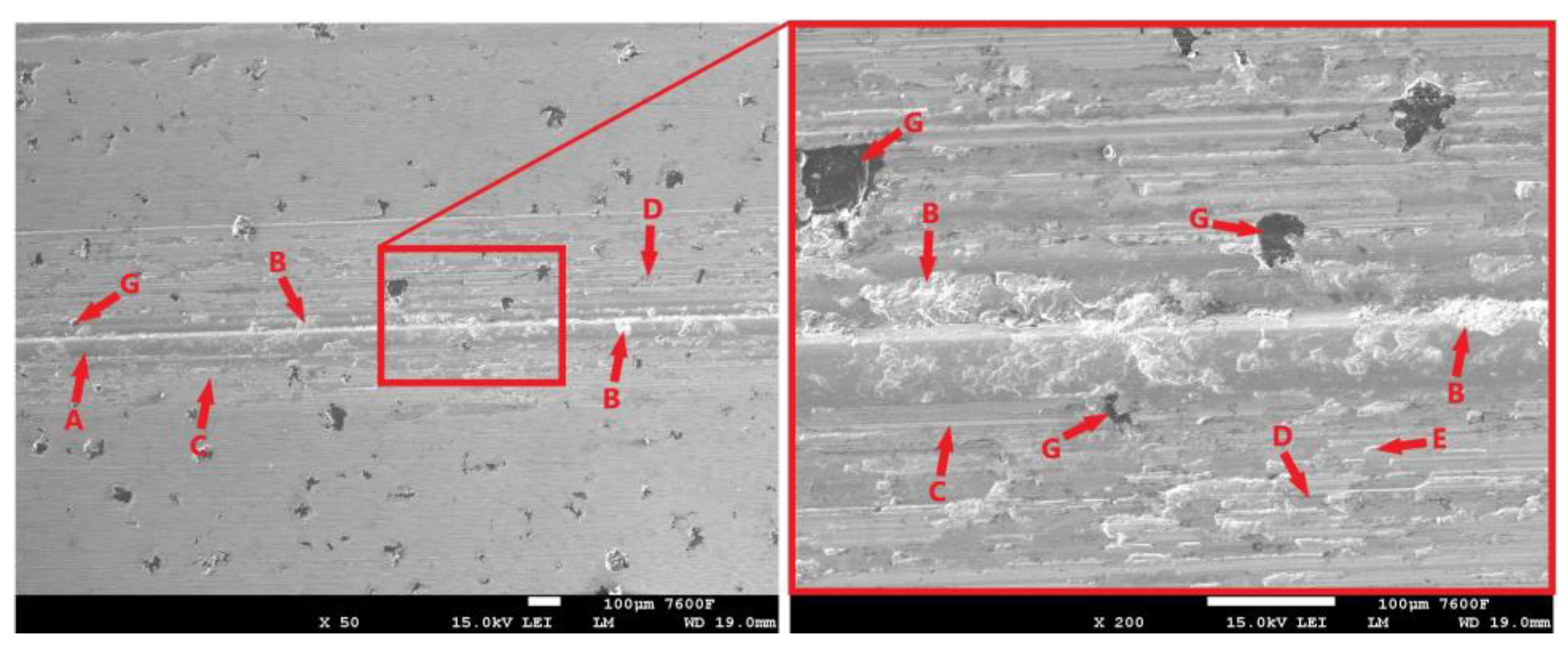

| Samples | Chemical Composition [wt.%] | ||||||
|---|---|---|---|---|---|---|---|
| C | Si | Mn | P | S | Mg | Cu | |
| ADI 9k6 240 | ADI 9k6 240 | 2.45 | 0.25 | 0.02 | 0.02 | 0.04 | 0.01 |
| ADI 9k6 310 | |||||||
| ADI 9k6 400 | |||||||
| Laser Used | Laserline LDF 10,000–100 |
|---|---|
| Focusing distance [mm] | 348 |
| Clouding optics | Laserline zoom optics |
| Laser spot size [mm] | 8 × 20 |
| Temperature [°C] | 1120 |
| Speed [cm/min] | 45 |
| Power [kW] | 10 |
| Sample | Test Length [min] | Non-Hardened Surface | Hardened Surface | ||
|---|---|---|---|---|---|
| COF | SD | COF | SD | ||
| ADI 9k6 240 | 30 | 0.539 | 0.222 | 0.392 | 0.207 |
| 11 | 0.504 | 0.198 | 0.347 | 0.224 | |
| ADI 9k6 310 | 30 | 0.512 | 0.190 | 0.548 | 0.169 |
| 11 | 0.471 | 0.214 | 0.489 | 0.205 | |
| ADI 9k6 400 | 30 | 0.469 | 0.250 | 0.341 | 0.228 |
| 11 | 0.423 | 0.175 | 0.285 | 0.200 | |
Disclaimer/Publisher’s Note: The statements, opinions and data contained in all publications are solely those of the individual author(s) and contributor(s) and not of MDPI and/or the editor(s). MDPI and/or the editor(s) disclaim responsibility for any injury to people or property resulting from any ideas, methods, instructions or products referred to in the content. |
© 2024 by the authors. Licensee MDPI, Basel, Switzerland. This article is an open access article distributed under the terms and conditions of the Creative Commons Attribution (CC BY) license (https://creativecommons.org/licenses/by/4.0/).
Share and Cite
Záhon, L.; Kuchař, J.; Horník, J.; Krčil, J.; Kudláček, J. Laser Surface Hardening of Austempered Ductile Iron (ADI). Coatings 2024, 14, 958. https://doi.org/10.3390/coatings14080958
Záhon L, Kuchař J, Horník J, Krčil J, Kudláček J. Laser Surface Hardening of Austempered Ductile Iron (ADI). Coatings. 2024; 14(8):958. https://doi.org/10.3390/coatings14080958
Chicago/Turabian StyleZáhon, Ladislav, Jiří Kuchař, Jakub Horník, Jan Krčil, and Jan Kudláček. 2024. "Laser Surface Hardening of Austempered Ductile Iron (ADI)" Coatings 14, no. 8: 958. https://doi.org/10.3390/coatings14080958
APA StyleZáhon, L., Kuchař, J., Horník, J., Krčil, J., & Kudláček, J. (2024). Laser Surface Hardening of Austempered Ductile Iron (ADI). Coatings, 14(8), 958. https://doi.org/10.3390/coatings14080958







